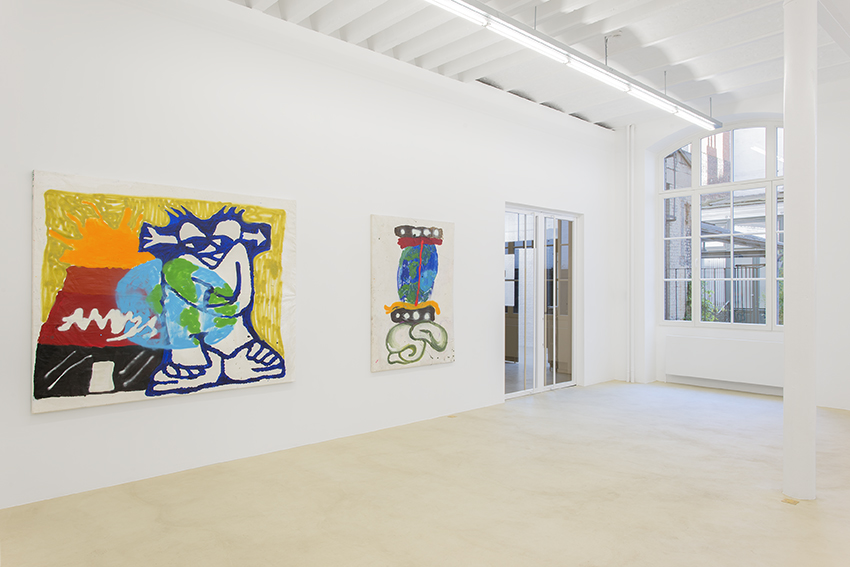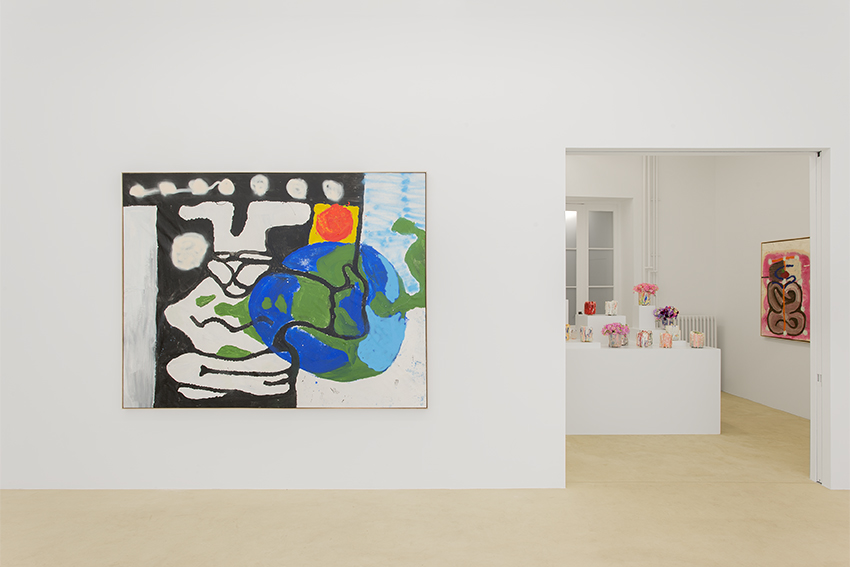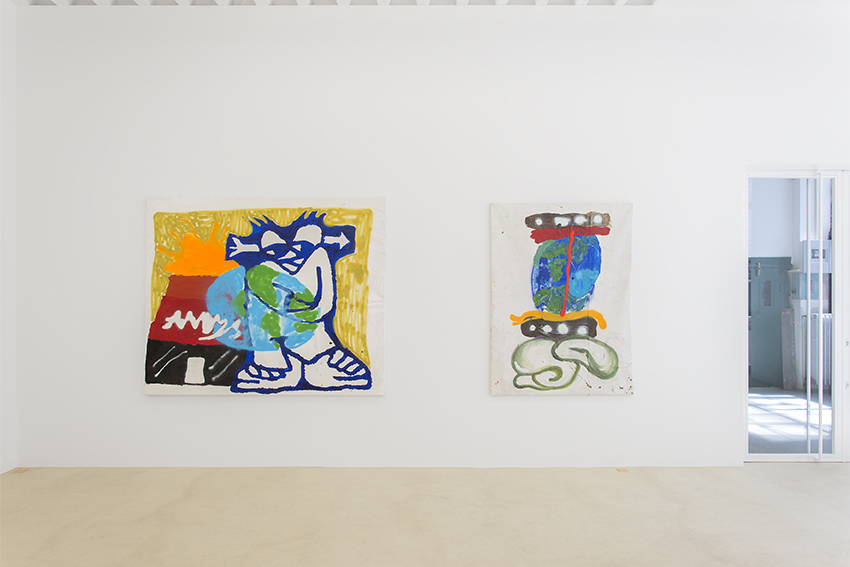
About
Gerasimos Floratos
Times Square paintings
11.06.15 → 17.07.15
His canvases flap loose. Some of the stretchers crook at the joints, made with the unfussy craft of the truly handmade object, a quality that gives the work what Gerasimos calls "mad character." He points out spots where the figures in the paintings appear to have a "broken hip" or a "sprained elbow" thanks to the warp of the wood or "very un-archival" use of paint. Even within the picture, the figures swell uncomfortably, jammed into the cramped space of the rectangle, squatting, crouching, bending, smoking. "Sketchballs and lurkers," is how Gerasimos describes them, and he sees himself in their reflection, the perverts and bums, the customers and loiters he spends his time with every day behind the counter of the deli his family runs a block from the racing heart of Times Square.
His studio is also in this neighborhood, a few blocks away, down a set of concrete stairs into a well-lit basement. Next door a dance studio plays percolating piano music. Gerasimos plays reggae and smokes, repeating songs compulsively, for hours, over and over, as if warding off the neighborhood's haunt of anxiety with the mantra of Jah. Gerasimos spends his days moving studio to deli in what he refers to as "the center of the world." He thrives in this place, dives into crowds and maneuvers through the never-ending avalanche of tourists flowing down broadway, a routine he pridefully calls his "pivot game." He was raised inside this electricity and the feeling of it is inextricable from his art. The center of the world - that plump, green and blue marble that revolves at the heart of Gerasimos' paintings.
The image of our home planet, as iconic and timeless and "universal" as it has become, is still a mere half century old, and Gerasimos figures' hold onto it. "They're larger than life," he says. It's unclear whether they want to hug it or squeeze it dead. It's become a central glyph for him in his language but Gerasimos thinks of it not as the earth shot from space in the late '60s, but as the symbol on the international calling cards he sells at his deli.
Similarly, he often draws and paints his family's deli, not from memory, but from an episode of Seinfeld, in which the shop is seen from a passing car. Nodding to Baudrillard, he describes it as "that simulacrum shit" where the imagery slips between his memory of a place, his conception of it, and its depiction in media. In this place of bright lights and big ticket shows and franchises, any attempt to separate oneself from the city is futile. Nature is gone. These paintings aren't windows, as they were for centuries of painters before, but billboards, blazing overhead at the vortex of culture.
— Ross Simonini







